
How to Use IRF520 MOSFET Driver Module: Examples, Pinouts, and Specs
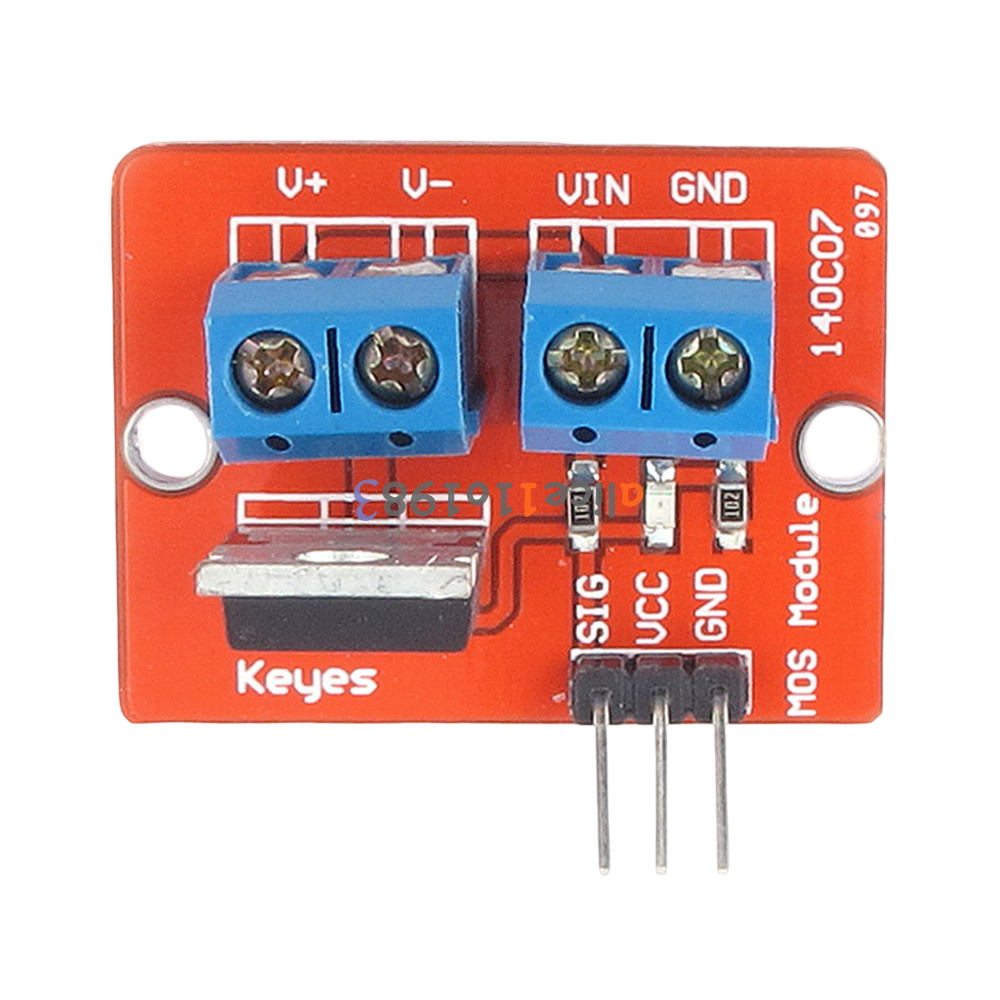
 Design with IRF520 MOSFET Driver Module in Cirkit Designer
Design with IRF520 MOSFET Driver Module in Cirkit DesignerIntroduction
The IRF520 MOSFET Driver Module is a versatile electronic component designed to control high-power devices using low-power signals. It leverages the IRF520 N-channel MOSFET, which is known for its efficiency in switching and amplification. This module is commonly used in applications such as motor control, LED dimming, and driving high-current loads in automation systems. Its compact design and ease of use make it a popular choice for hobbyists and professionals alike.
Explore Projects Built with IRF520 MOSFET Driver Module
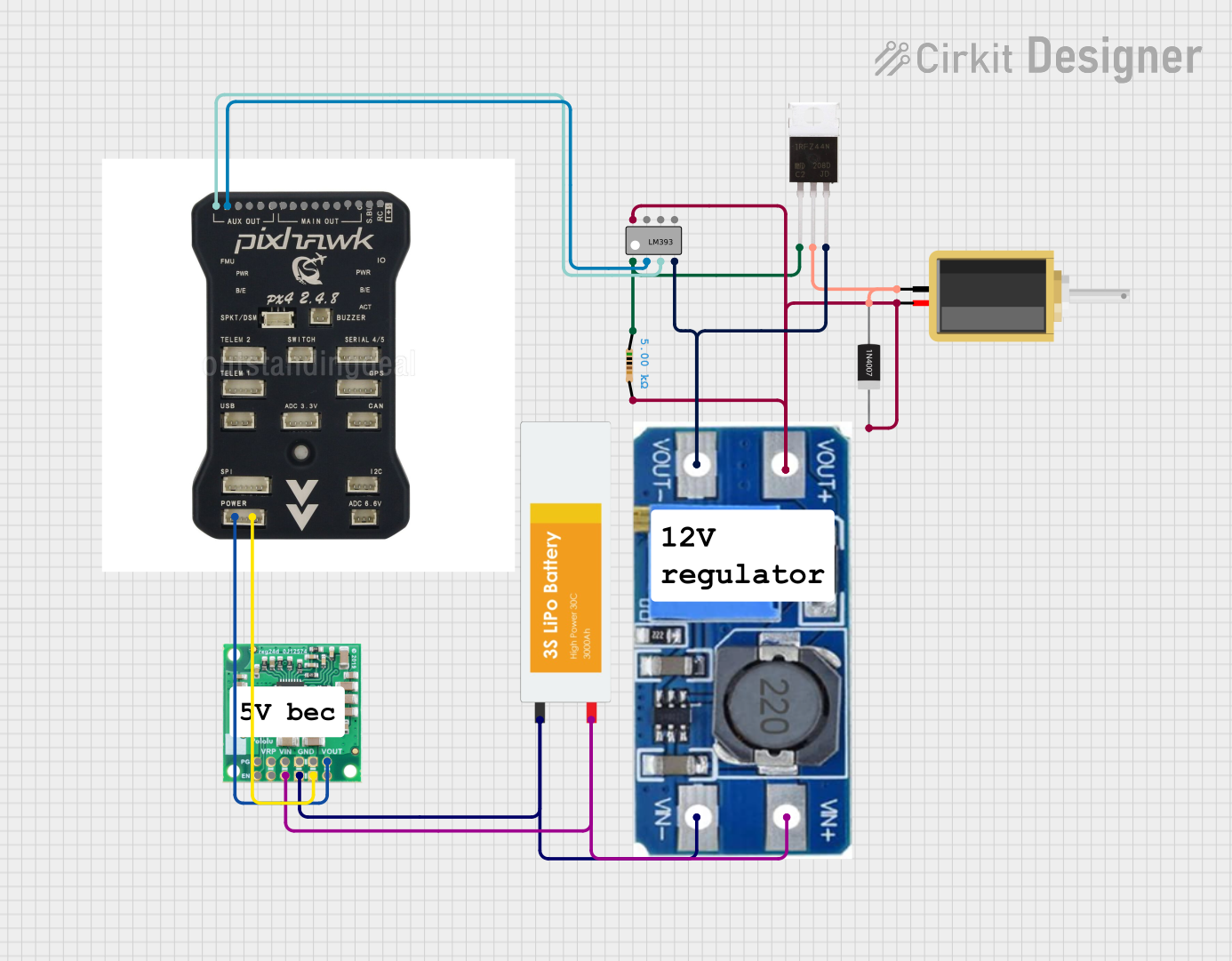
 Open Project in Cirkit Designer
Open Project in Cirkit Designer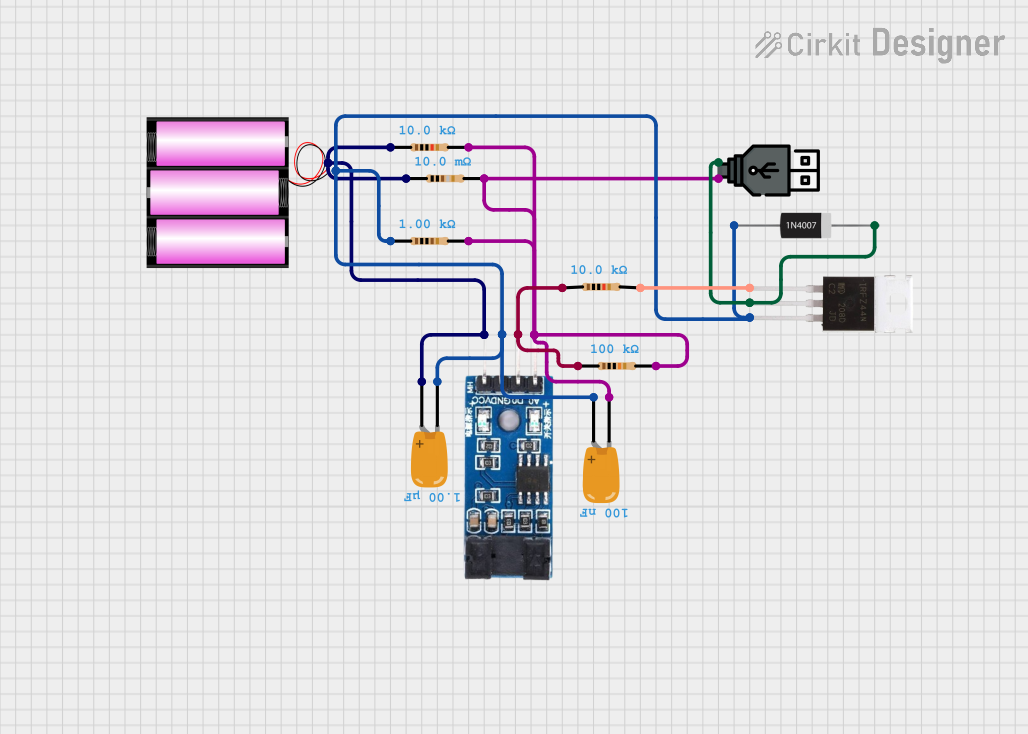
 Open Project in Cirkit Designer
Open Project in Cirkit Designer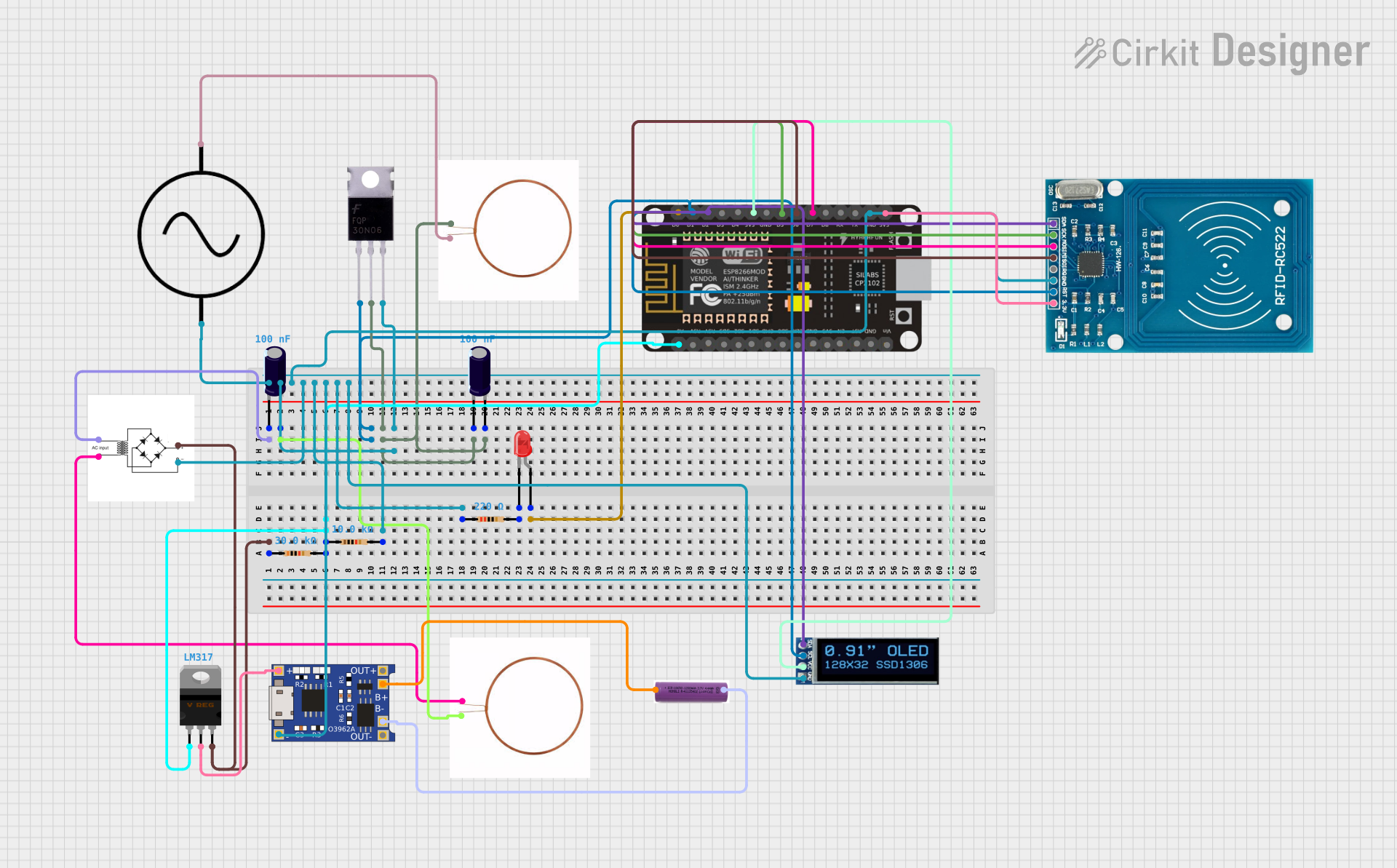
 Open Project in Cirkit Designer
Open Project in Cirkit Designer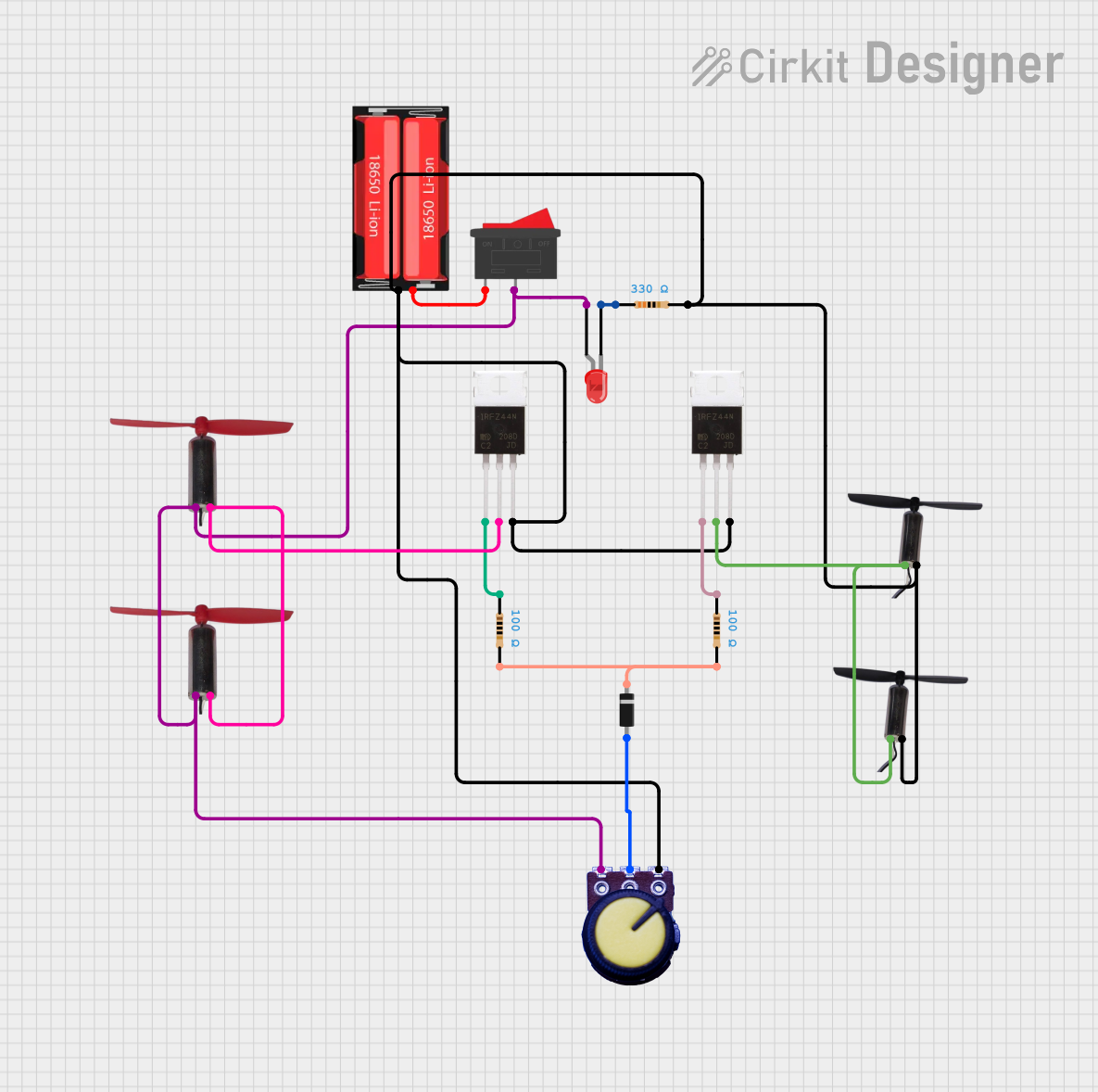
 Open Project in Cirkit Designer
Open Project in Cirkit DesignerExplore Projects Built with IRF520 MOSFET Driver Module

 Open Project in Cirkit Designer
Open Project in Cirkit Designer
 Open Project in Cirkit Designer
Open Project in Cirkit Designer
 Open Project in Cirkit Designer
Open Project in Cirkit Designer
 Open Project in Cirkit Designer
Open Project in Cirkit DesignerCommon Applications:
- Driving DC motors
- Controlling high-power LEDs
- Switching solenoids and relays
- General-purpose high-current load control
- PWM (Pulse Width Modulation) applications
Technical Specifications
Key Technical Details:
- MOSFET Type: IRF520 N-channel MOSFET
- Input Voltage (Logic Level): 3.3V to 5V
- Load Voltage: Up to 24V DC
- Load Current: Up to 5A (with proper heat dissipation)
- Trigger Current: 15mA (typical)
- On-Resistance (RDS(on)): 0.27Ω (at 10V gate drive)
- Module Dimensions: 33mm x 24mm x 15mm (approx.)
Pin Configuration and Descriptions:
The IRF520 MOSFET Driver Module typically has a 3-pin input interface and a 2-pin output interface. Below is the pinout description:
Input Pins:
| Pin Name | Description |
|---|---|
| VCC | Power supply for the module (3.3V-5V) |
| GND | Ground connection |
| SIG | Signal input to control the MOSFET |
Output Pins:
| Pin Name | Description |
|---|---|
| V+ | Positive terminal for the load |
| V- | Negative terminal for the load |
Usage Instructions
How to Use the IRF520 MOSFET Driver Module:
Connect the Power Supply:
- Connect the VCC pin to a 3.3V or 5V power source.
- Connect the GND pin to the ground of your circuit.
Connect the Load:
- Attach the positive terminal of your load to the V+ pin.
- Connect the negative terminal of your load to the V- pin.
Control the Module:
- Use a microcontroller (e.g., Arduino UNO) or other logic-level signal source to send a control signal to the SIG pin.
- A HIGH signal (3.3V or 5V) will turn the MOSFET ON, allowing current to flow through the load.
- A LOW signal (0V) will turn the MOSFET OFF, stopping current flow.
Ensure Proper Heat Dissipation:
- For high-current loads, attach a heatsink to the IRF520 MOSFET to prevent overheating.
Example Arduino Code:
Below is an example of how to use the IRF520 MOSFET Driver Module with an Arduino UNO to control an LED:
// Define the pin connected to the SIG pin of the IRF520 module
const int mosfetPin = 9;
void setup() {
// Set the MOSFET control pin as an output
pinMode(mosfetPin, OUTPUT);
}
void loop() {
// Turn the MOSFET ON (LED ON)
digitalWrite(mosfetPin, HIGH);
delay(1000); // Keep the LED ON for 1 second
// Turn the MOSFET OFF (LED OFF)
digitalWrite(mosfetPin, LOW);
delay(1000); // Keep the LED OFF for 1 second
}
Important Considerations:
- Voltage Compatibility: Ensure the load voltage does not exceed 24V DC.
- Current Handling: Do not exceed the maximum current rating of 5A without proper heat dissipation.
- Signal Voltage: The SIG pin is compatible with 3.3V and 5V logic levels, making it suitable for most microcontrollers.
- Inductive Loads: When driving inductive loads (e.g., motors, solenoids), use a flyback diode across the load to protect the MOSFET from voltage spikes.
Troubleshooting and FAQs
Common Issues and Solutions:
The load does not turn ON:
- Verify that the SIG pin is receiving a HIGH signal (3.3V or 5V).
- Check the connections to ensure the load is properly connected to the V+ and V- pins.
- Ensure the power supply voltage and current are sufficient for the load.
The MOSFET overheats:
- Attach a heatsink to the IRF520 MOSFET for better heat dissipation.
- Reduce the load current if possible.
The module does not respond to the control signal:
- Confirm that the VCC and GND pins are correctly connected to the power supply.
- Check the SIG pin connection and ensure the microcontroller is functioning properly.
The load flickers or behaves erratically:
- Ensure the power supply is stable and capable of handling the load's current requirements.
- For PWM applications, verify that the PWM frequency is appropriate for the load.
FAQs:
Q: Can I use the IRF520 module with a 12V motor?
A: Yes, the IRF520 module can handle up to 24V DC, so it is suitable for a 12V motor. Ensure the motor's current does not exceed 5A.
Q: Is the IRF520 module compatible with 3.3V logic?
A: Yes, the SIG pin can accept both 3.3V and 5V logic levels, making it compatible with most microcontrollers.
Q: Do I need a heatsink for low-current applications?
A: No, a heatsink is generally not required for low-current applications (e.g., under 1A). However, for higher currents, a heatsink is recommended.
Q: Can I use this module for AC loads?
A: No, the IRF520 module is designed for DC loads only. It cannot be used to control AC devices.
By following this documentation, you can effectively use the IRF520 MOSFET Driver Module in your electronic projects.